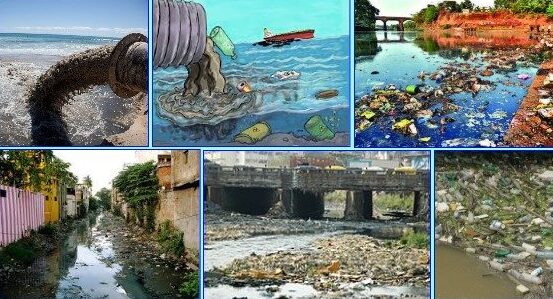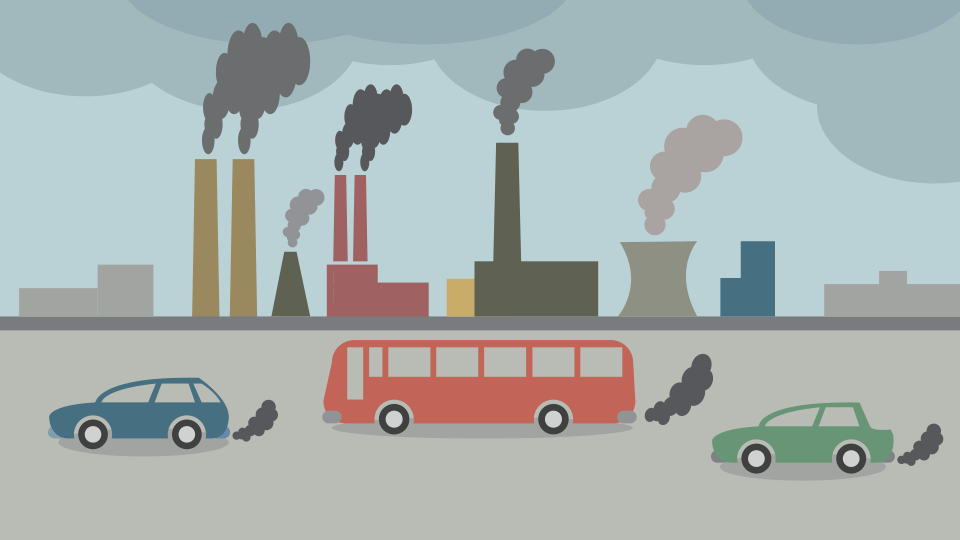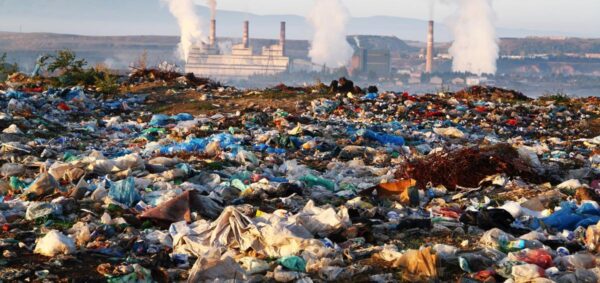Pollution refers to the presence of a substance or substances in the environment that is harmful or toxic. Substances or contaminants that can be harmful to human health, other animals and plants. When something harmful enters the environment at a rate faster than its ability to disperse, there is pollution.
Contaminants can be natural or man-made. If something is man-made, it comes from human activity. For example, volcanic ash is a natural pollutant, while smoke from vehicles is the result of human activity.
Pollutants damage soil, water, and air. In other words, they damage our environment.
National Geographic has the following definition of the term:
“Pollution is the introduction of harmful substances into the environment. These harmful materials are called contaminants.
Pollution etymology
Etymology is the study of the origin of words and the development of their meanings and usage.
The term appeared in English in the mid-fourteenth century. However, this did not mean the same as today. In the 14th century, it meant “discharge of semen outside and during intercourse”. At the end of the 14th century, it also meant “uncleanness, desecration”.
The word comes from the Late Latin word Pollutionem (nominative pollution), which means “pollution”.
It wasn’t until about 1860 that pollution came to mean “environmental pollution”. According to the Online Etymology Dictionary, it did not become a common term until about 1955.
Water pollution

Water pollution includes contamination of aquifers, rivers, seas and lakes. Not surprisingly, in the vast majority of cases today’s water pollution is the result of human activity.
This type of pollution exists when we cannot remove contaminants from water bodies fast enough. In some cases, we may end up consuming these contaminants without being near the affected bodies of water.
For example, contaminants can get into the food we eat. We call them “food contaminants”. Many food contaminants cause foodborne illness.
In many developing countries around the world, dirty and polluted water is a major cause of death. Experts say the pollution of our water is the second most pressing environmental concern, after air pollution.
In economics, there is a term – “non-economic growth” – for GDP growth that does more harm than good. Polluted water is a major consequence of uneconomic growth. GDP represents gross domestic product, that is, all the goods and services an economy produces in a given period.
Air pollution

Some people use the term “air pollution”. This category involves the release of particles and chemicals into the atmosphere.
The particles are microscopic liquids or solids suspended in the air. The letters PM, when talking about air quality, mean “particulate matter”.
Common gases that we classify as pollutants include sulfur dioxide, CFCs, nitrogen oxides and carbon monoxide. When hydrocarbons and nitrous oxide react in sunlight, fog and ozone are formed.
According to the UK Department for Environment, Food and Rural Affairs (DEFRA), air pollution can cause both long-term and short-term effects on health. The following groups of people are very concerned about air pollution:
- People with lung or heart disease.
- Carers (UK: Carers), parents and healthcare professionals caring for people whose health is sensitive to polluted air.
- Scientific community.
- Members of the public want to know more about the pollutants in our atmosphere and why they exist. They may also want to know what they can do to help minimize it.
Weather can affect air quality
The British Lung Foundation says the amount of air pollution can vary depending on the season and weather. For example, in calm weather, in the summer, it is more difficult for airborne pollutants to disperse. This is also the case when there is fog in winter. In such cases, the air quality deteriorates significantly.
Land pollution

This includes deposition of liquid or solid waste on the ground. It also includes their deposits underground. In either case, they contaminate soil and groundwater, destroy our environment and threaten public health.
There are three main types of waste that pollute the soil:
- Municipal waste, which we also call municipal solid waste (MSW). For example, waste from households and businesses falls into this category.
- Construction and demolition debris or waste. This category includes wood, concrete debris, asphalt, and metal objects.
- Hazardous Waste This type of waste includes chemicals from refineries, foundries, dry cleaners, auto shops, and sewage leaks. There are many other sources of hazardous waste.
Light pollution

We also talk about light pollution. This includes the presence of human-made light in nocturnal habitats. In other words, artificial light.
Artificial light has helped drive economic growth and made us all more prosperous. However, pilot lights that are too large or inappropriate can be harmful to our health as well as those of animals and plants. When this happens, we talk about light pollution.
Wikipedia says the following about light pollution:
“It’s exacerbated by the use of excessive, misdirected or intrusive light, but even carefully used lighting fundamentally alters natural conditions. As a major side effect of urbanization, it is blamed for damaging health, disrupting ecosystems, and damaging the aesthetic environment.
Light pollution can cause worker fatigue, decreased sexual function, increased anxiety. It can also cause people to get headaches more often.
The following quote from the American Academy of Sleep Medicine:
“Inappropriate or excessive use of artificial, outdoor light at night, known as ‘light pollution’, has emerged as a new environmental factor related to human health.”
“Research has shown that artificial light at night, whether indoors or outdoors, causes disruptions to circadian rhythms, which can lead to metabolic and chronic diseases, including cancer, diabetes, and diabetes. sugar, obesity and depression.”

